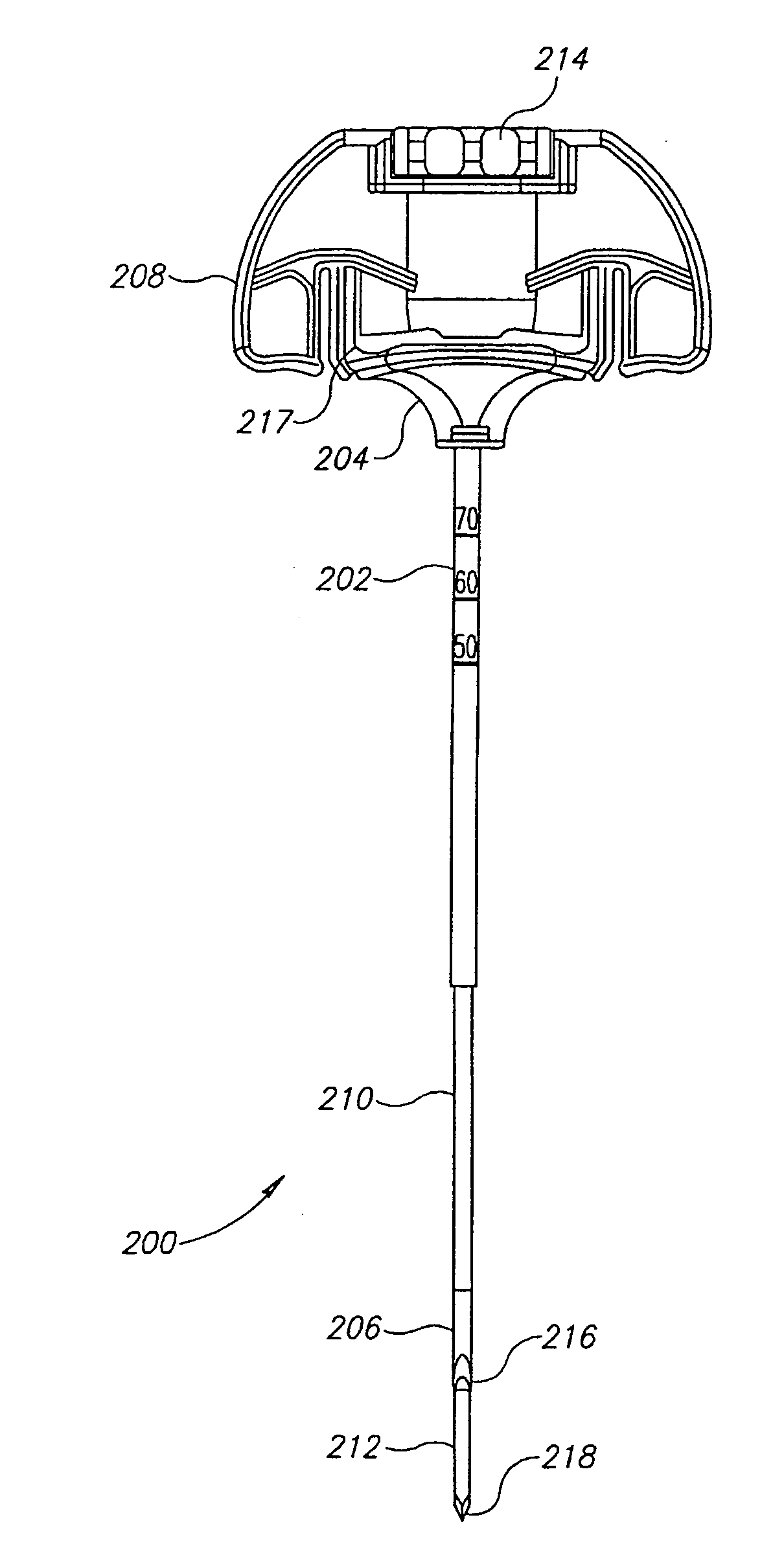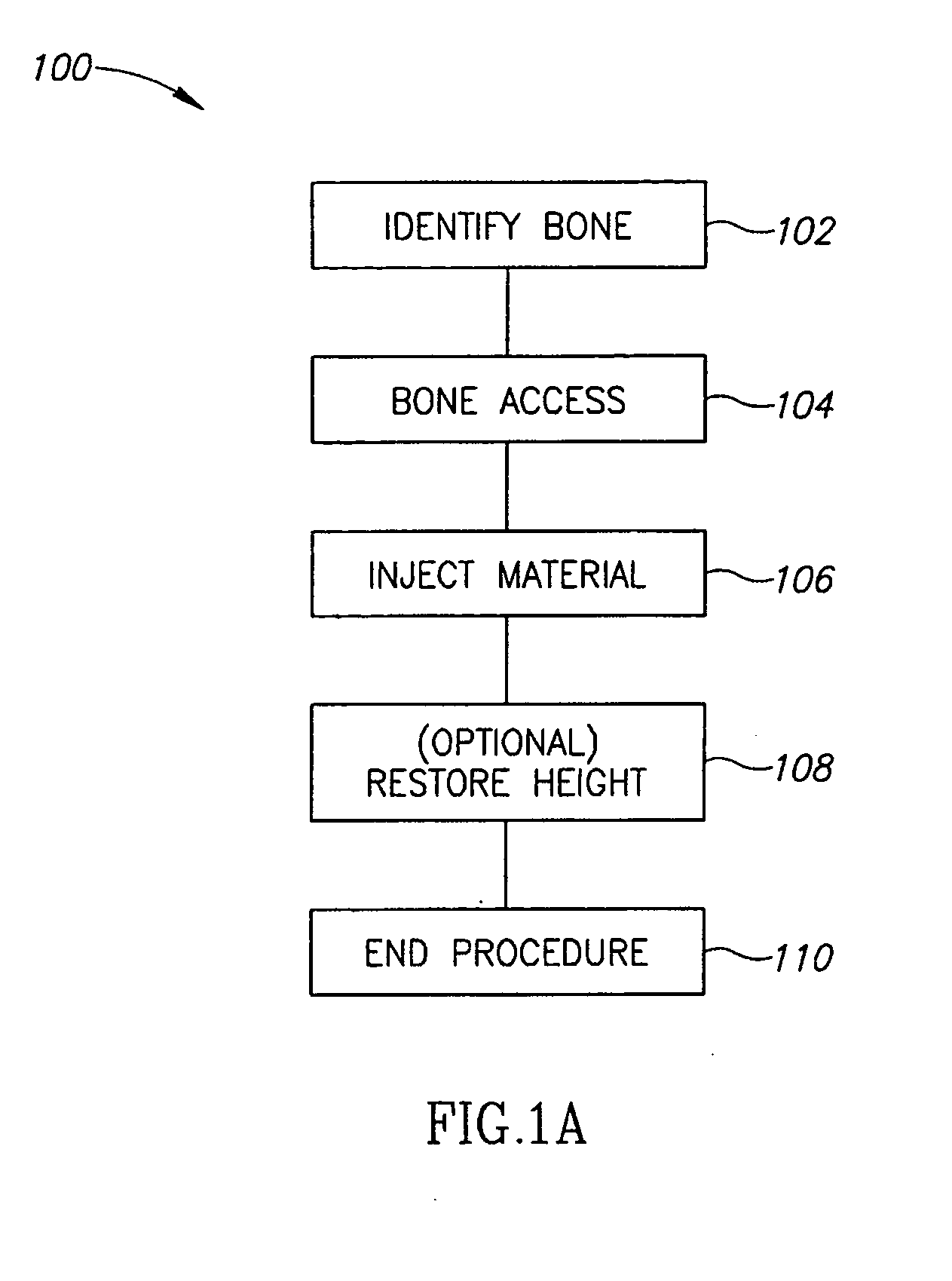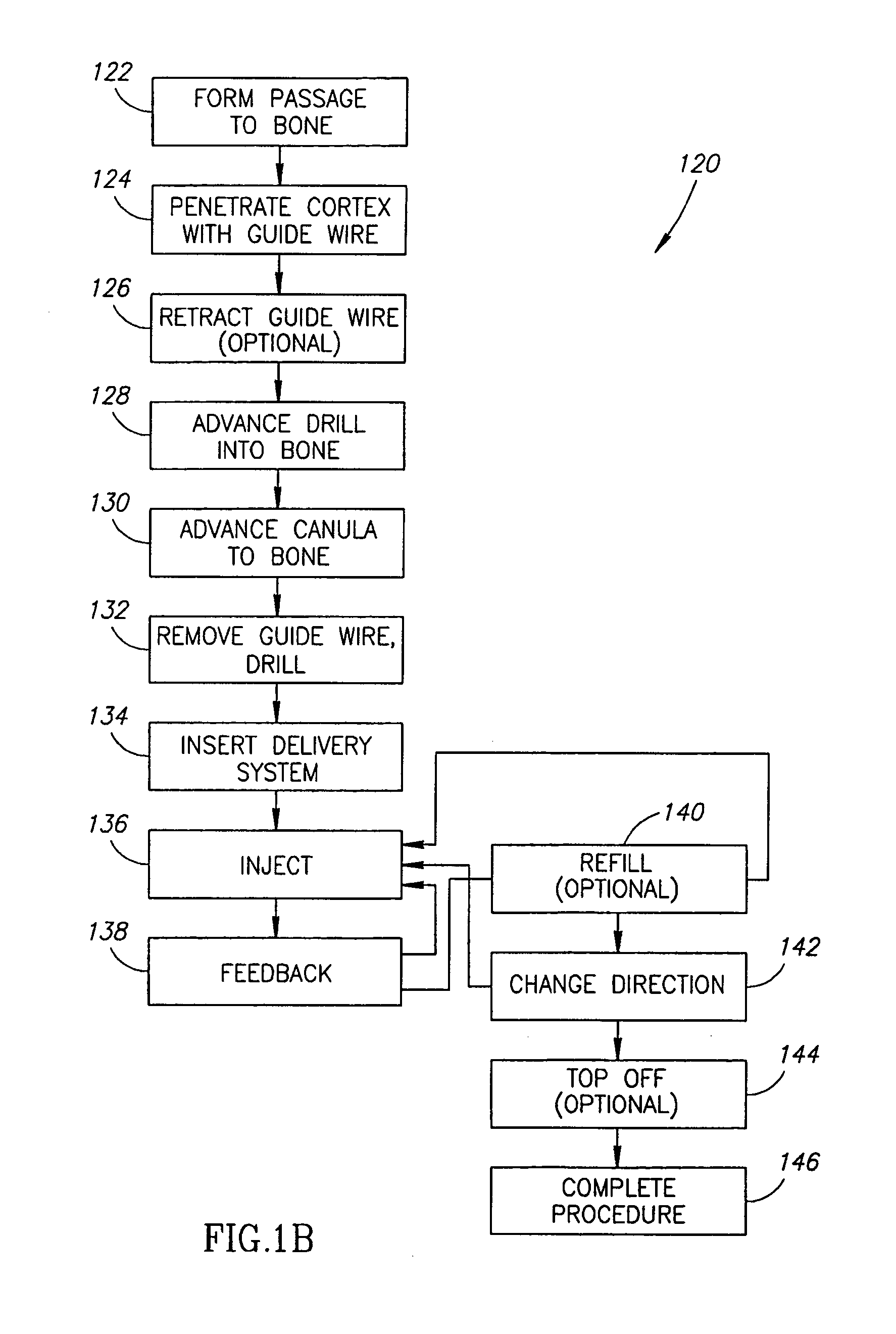Methods, Materials and Apparatus for Treating Bone or Other Tissue
a technology of applied in the field of human body structural enhancement, can solve the problems of reducing the normal height of the person, and reducing the effect of the bone or other tissue, so as to achieve the effect of softening the material
- Summary
- Abstract
- Description
- Claims
- Application Information
AI Technical Summary
Benefits of technology
Problems solved by technology
Method used
Image
Examples
Embodiment Construction
Overview of Exemplary Process
[0145]FIG. 1A is a general flowchart 100 of a process of treating a compression fracture, in accordance with an exemplary embodiment of the invention.
[0146]At 102, a bone to be treated is identified. In the case of a vertebra, this usually involves X-ray or CT images to identify a vertebra or other bone that is fractured, for example by a compression fracture. The following description focuses on vertebral compression fractures but some embodiments of the invention are not limited to such cases.
[0147]In an exemplary embodiment of the invention, the access is minimally invasive, for example, only a single channel is formed into the body. Optionally, the procedure is carried out via a cannula having a diameter of, for example of 5 mm, 4 mm or less in diameter is inserted into the body. In some cases, multiple openings into the body are formed. The procedure can also be carried out using a surgical or key-hole incision, however, this may require a longer re...
PUM
| Property | Measurement | Unit |
|---|---|---|
| pressure | aaaaa | aaaaa |
| thickness | aaaaa | aaaaa |
| thickness | aaaaa | aaaaa |
Abstract
Description
Claims
Application Information
 Login to View More
Login to View More - R&D
- Intellectual Property
- Life Sciences
- Materials
- Tech Scout
- Unparalleled Data Quality
- Higher Quality Content
- 60% Fewer Hallucinations
Browse by: Latest US Patents, China's latest patents, Technical Efficacy Thesaurus, Application Domain, Technology Topic, Popular Technical Reports.
© 2025 PatSnap. All rights reserved.Legal|Privacy policy|Modern Slavery Act Transparency Statement|Sitemap|About US| Contact US: help@patsnap.com



